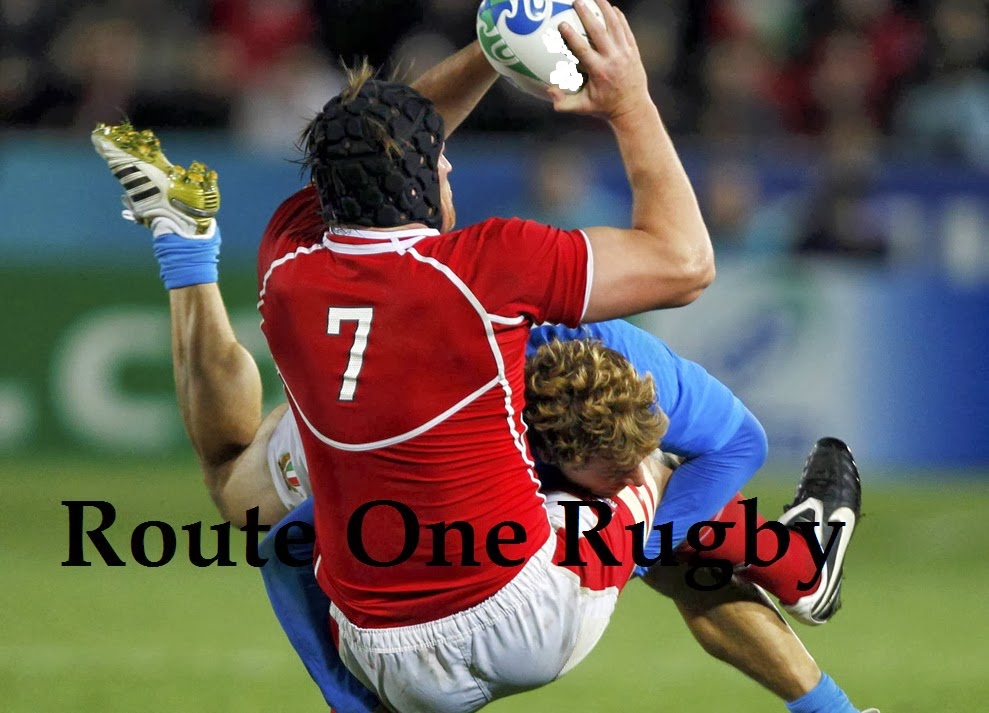 |
| Source: Patrick Bolger/Getty Images Europe |
The Munster v Toulouse game (highlights) on Saturday was a fascinating affair because of the contrasting performances of the two teams, Munster carving deep holes in the Toulouse defence while the French side bumbled their way around the field offensively, shorn of a real attacking plan it seemed. The scores of the Irishmen were built up methodically, as they out-muscled a pack that was considerably larger than theirs and used a maul that walked at will. It was truly a match that showed Munster are a sum greater than their parts.
I want to highlight today, in two parts to make them more digestible, the one try put up by Toulouse (around the 2:50 mark of the highlight package) because it was the complete personification of their performance and a classic symbol for what French rugby means to so many: a try from nothing. Watch that try, and we'll discuss what happened in the lead up and the break that led to the score.
Part 1 Outline: We're looking at a 1:30 minute stretch of offensive play by the Toulousain men in the second half, starting around the 52 minute mark. Luke McAllister (19m, 2 carries, 12 passes 9 points) had a mixed bag at Fly-half but the team play overall was lethargic, and Lionel Beauxis was brought on to change the team's fortunes being 18 points down. They have recovered a restart kick from the 22 metre line, and are beginning the attack half way between the 10m and 22m lines.
Meandering:
The genesis for this post was watching Toulouse (black) throw the ball wide, all the way left then back across the field, with no real effort to actually do any thing. They were basically pushing the ball down the line without anyone taking charge and challenging the Munster (red) defence.
Below we see an example of this, as Beauxis (orange cleats with the ball) has received the ball and recognising that the opposition has a strong line of defence coming up in the middle of the field, is planting his feet to pass the ball on. The first defenders see this and push everyone down because they know the flyhalf cannot run from this position. The next player available to take the ball is about 12m behind the gainline, which will give the defence plenty of time to set.
 |
| Attacking breakdown #1, offense right |
Florian Fritz, outside centre, takes the ball from Beauxis and drifts across the field left, into the Munster defence, incurring a soft commitment from the men in red. He pops it to the man coming tight on his side and two Munster players turn in to make the tackle, but outside Fritz are 4 players looping as a second wave that could have exploited the out-manned Keith Earls down the short side.
 |
| Prelude to attacking breakdown #2 |
Instead, it's a crash ball that shuts down the attack on this side of the field, and we're headed back towards the viewer!
 |
| Poitrenaud, 4th from the left, with ball in hand |
I've numbered the offensive and defensive players as they line up, so #1 Toulouse is covered by #1 Munster. At this point everything is equal, and the chance is pretty much gone for the men in black, unless a missed tackle occurs. Fickou takes on the gap between Downey (#1) and Zebo (#2), seeing that the former is attacking the side of his body instead of square, and the latter has shoulders facing towards the sidelines, preparing to handle the tackle if the ball is moved. Downey makes the tackle (below), and all the players on the gain line for both sides are now engaged in a breakdown.
 |
| Attacking breakdown #3 |
These plays are common place on a rugby pitch over 80 minutes: breakouts that never were, missed passing opportunities, defenders unchallenged. This sequence wasn't any more galling than most of the rest of the game played by Toulouse, it was just that the play at this point showcased their lack of flair and class during this match. They are a good team, but I'm sure will rue their missed chances. In the instances sited above, simple options were available to the playmakers to take, but unfortunately it was not the outcome that was chosen. Part 2 will give this sequence further context and showcase the quality that Toulouse had available if they could make use of it.
For those interested in watching the action in full, here ya go.


No comments:
Post a Comment